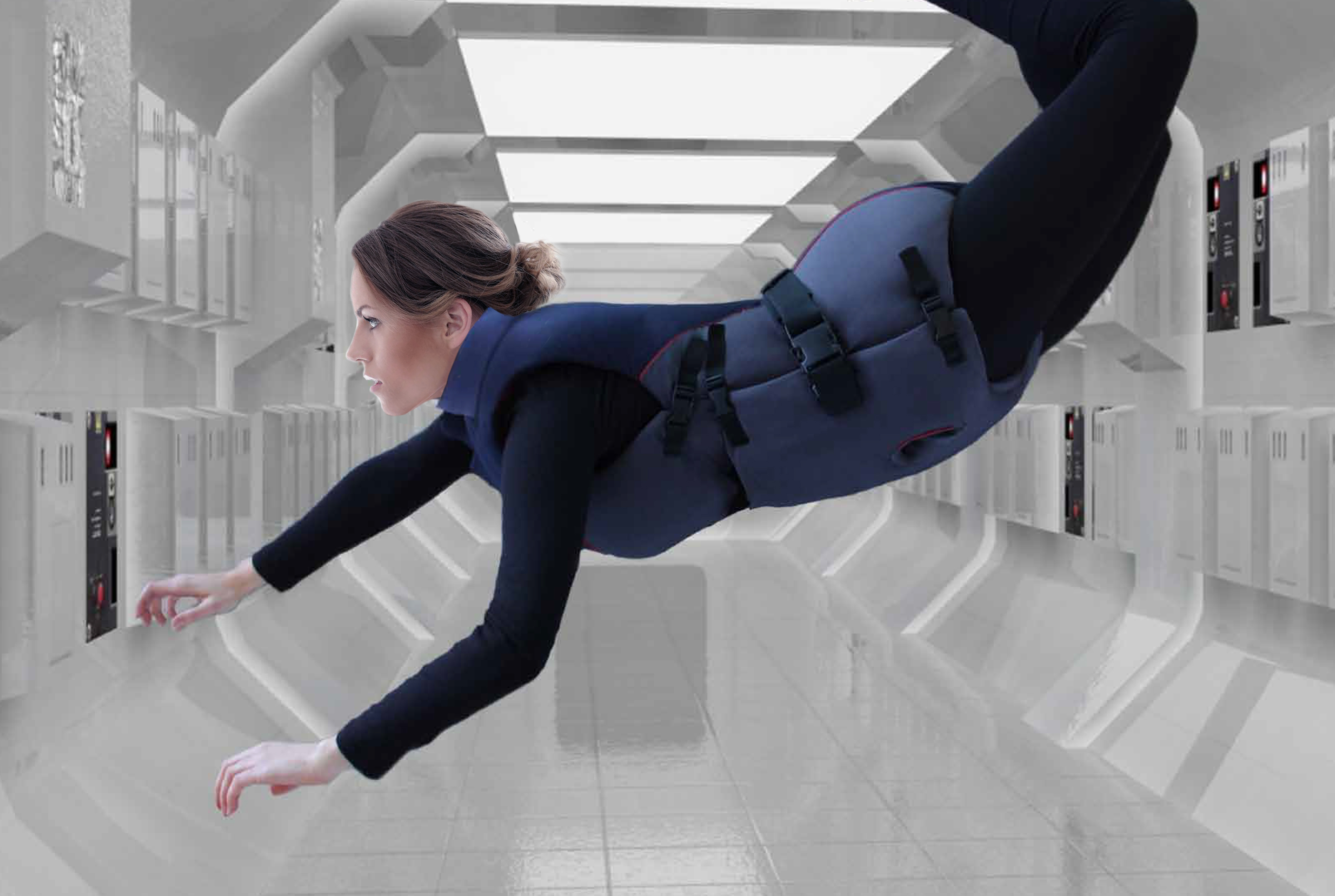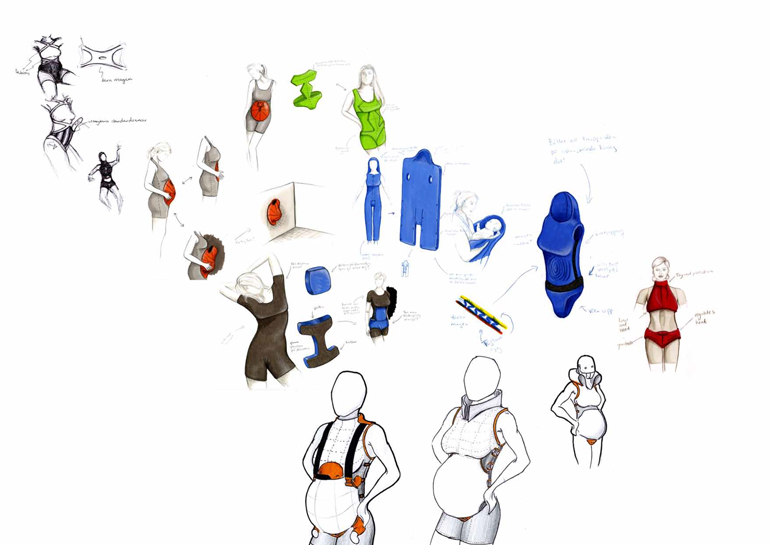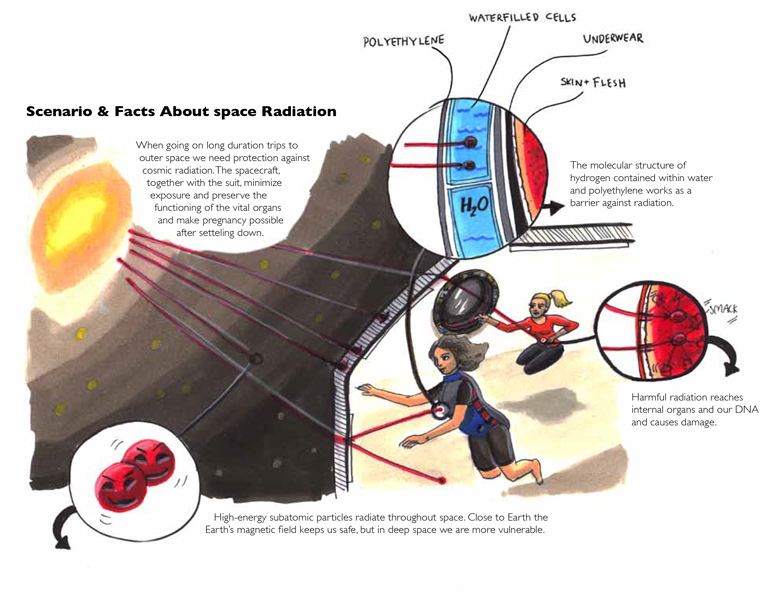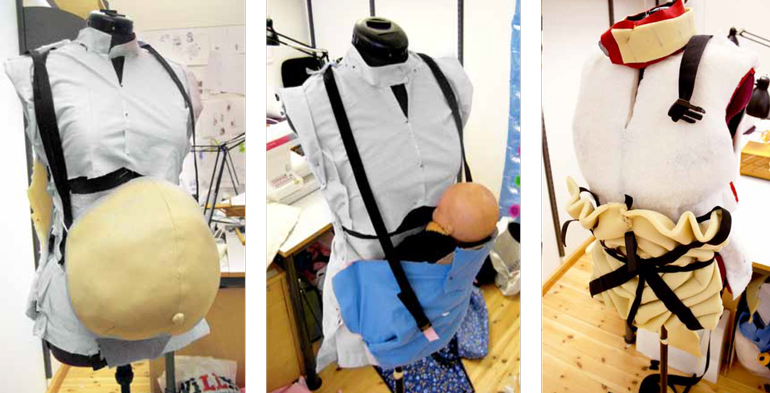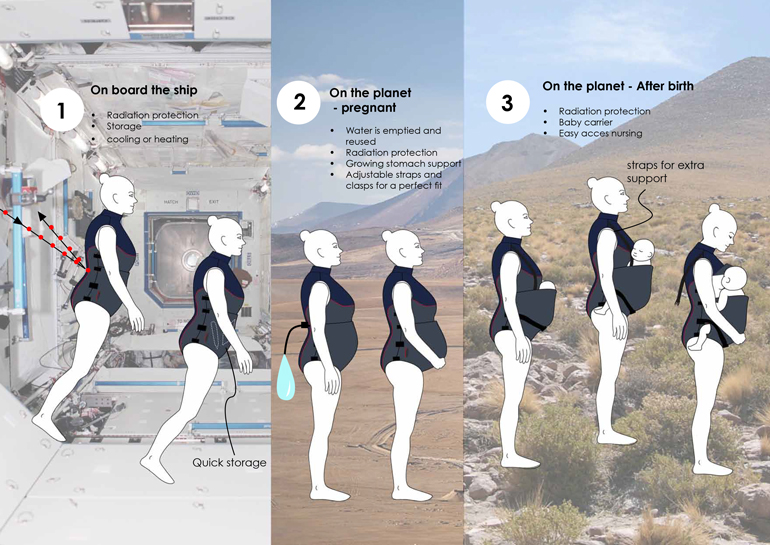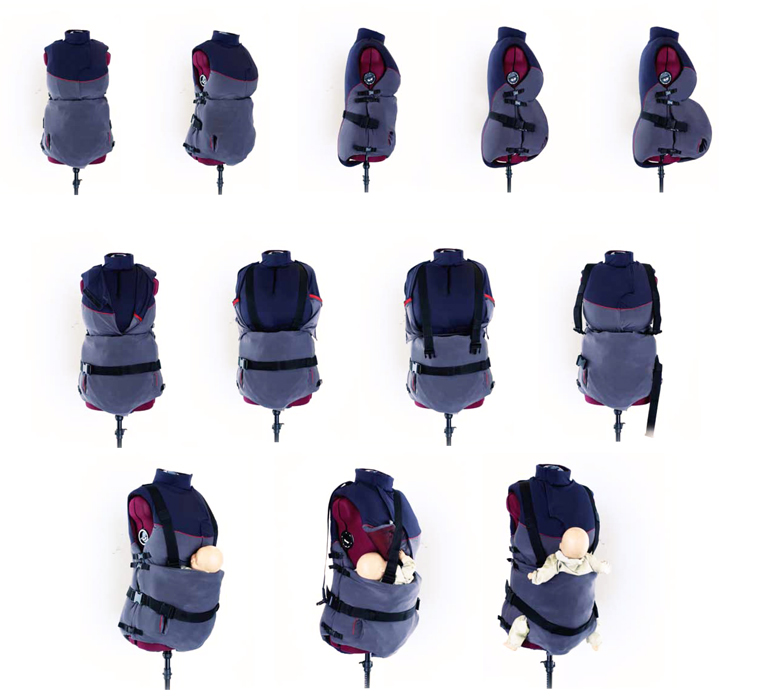A space suit to fit the needs of women who in the future will travel to other inhabitable planets with the intention to reproduce and and start a new race of humans. How can we protect them from the harmful radiation in space?
The theme of the course was “Risk”, which lead us to think of risk filled situations in space. Intimacy and reproduction in space are interesting and important subjects since they’re going to be necessary if we humans are going to explore or even colonize other planets in the future.We decided to create something that would be of use in those scenarios.
A visit to Nasa
This project was a collaboration between Lund University and the Johnson Space Center in Houston,Texas. As part of the project we got to travel there to visit NASA and do research for our projects.We got to meet with experts on living in spacecrafts and on new planets, radiation, uncertainties human ecology in space, a space psychologist and even an astronaut.
We also held an exhibition and a survey
at NASA.To dig deeper into people’s thoughts and knowledge about intimacy and reproduction in space and how to aid it, we talked to 21 Engineers, Scientists and risk Analysts.
We came to the conclusion that the biggest problem with reproduction in space actually would be the exposure to radiation during the trips. Radiation protection is a vital factor for making human existence possible in outer space at all.
Our main focus now was to explore radiation protection for everyday use within the spacecraft.
Designing for space
While making design decisions, we had to consider the female anatomy with all its vital organs. We also thought of the importance of multifunctional equipment that have several purposes and can be used in different situations both on board spacecrafts and on destination. Also when designing products for weightlessness, the number of loose parts should be kept to a minimum and we tried to take care of that.We found some inspiration in baby slings and safety vests.
Final Result
The three different parts
The back part and upper front part are joined at the shoulders and the head goes through this part. The stomach is a loose part that attaches to the back with clasps on the sides and secures the suit. Between the legs, the stomach part is connected to the back part with velcro to simplify visits to the bathroom.
Additional Functions
- Cooling/warming system for the water. The system could be built in or the suit could be connectable to a machine in the spaceship.
- Plug that enables you to fill and empty the suit.The water pockets could be divided in different parts to ease the filling and emptying process
- Radiation measurer that allows you to monitor and limit your daily radiation exposure.
Shape and color
Since the suit is quite thick, we tried to give it a feminine and slimming shape that follows a woman’s body. The colors were chosen to correlate to NASA’s image


